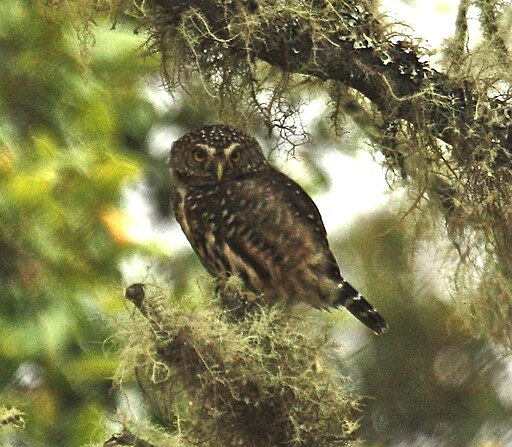Superregnum: Eukaryota
Cladus: Unikonta
Cladus: Opisthokonta
Cladus: Holozoa
Regnum: Animalia
Subregnum: Eumetazoa
Cladus: Bilateria
Cladus: Nephrozoa
Superphylum: Deuterostomia
Phylum: Chordata
Subphylum: Vertebrata
Infraphylum: Gnathostomata
Megaclassis: Osteichthyes
Cladus: Sarcopterygii
Cladus: Rhipidistia
Cladus: Tetrapodomorpha
Cladus: Eotetrapodiformes
Cladus: Elpistostegalia
Superclassis: Tetrapoda
Cladus: Reptiliomorpha
Cladus: Amniota
Classis: Reptilia
Cladus: Eureptilia
Cladus: Romeriida
Subclassis: Diapsida
Cladus: Sauria
Infraclassis: Archosauromorpha
Cladus: Crurotarsi
Divisio: Archosauria
Cladus: Avemetatarsalia
Cladus: Ornithodira
Subtaxon: Dinosauromorpha
Cladus: Dinosauriformes
Cladus: Dracohors
Cladus: Dinosauria
Ordo: Saurischia
Cladus: Eusaurischia
Subordo: Theropoda
Cladus: Neotheropoda
Cladus: Averostra
Cladus: Tetanurae
Cladus: Avetheropoda
Cladus: Coelurosauria
Cladus: Tyrannoraptora
Cladus: Maniraptoromorpha
Cladus: Maniraptoriformes
Cladus: Maniraptora
Cladus: Pennaraptora
Cladus: Paraves
Cladus: Eumaniraptora
Cladus: Avialae
Infraclassis: Aves
Cladus: Euavialae
Cladus: Avebrevicauda
Cladus: Pygostylia
Cladus: Ornithothoraces
Cladus: Ornithuromorpha
Cladus: Carinatae
Parvclassis: Neornithes
Cohors: Neognathae
Cladus: Neoaves
Ordo: Strigiformes
Familia: Strigidae
Subfamilia: Surniinae
Genus: Glaucidium
Species: Glaucidium bolivianum
Name
Glaucidium bolivianum König, 1991
References
Ökologie der Vögel 13 p. 36-45
Vernacular names
čeština: Kulíšek bolivijský
English: Yungas Pygmy Owl
español: Mochuelo boliviano
suomi: Bolivianvarpuspöllö
The Yungas pygmy owl (Glaucidium bolivianum), is a species of owl in the family Strigidae. It is found in Argentina, Bolivia, and Peru.[3]
Taxonomy and systematics
The Yungas pygmy owl has been treated as a subspecies of Andean pygmy owl (Glaucidium jardinii) but since at least the 1990s has been accepted as a species in its own right and sister to G. jardinii. It is monotypic.[4][3]
Description
The Yungas pygmy owl is about 16 cm (6.3 in) long. Males weigh 55 to 58 g (1.9 to 2.0 oz) and females average 66.5 g (2.35 oz). The species has three color morphs, a rare gray one and common and widespread brown and rufous morphs. All have pale dots on the crown, back, and upper wings and pale bands on the tail. Their napes have "false eyes". Their undersides are pale with brownish streaks on the flanks and belly.[5]
Distribution and habitat
The Yungas pygmy owl is found on the eastern slope of the Andes of Peru south through Bolivia into northwestern Argentina. In elevation it usually ranges between 1,400 and 3,000 m (4,600 and 9,800 ft) but can be found as low as 900 m (3,000 ft) and in Bolivia as high as 3,900 m (12,800 ft). It inhabits montane forest and cloudforest with heavy undergrowth and much moss and epiphytes, and also Podocarpus forest. It usually is found from the mid-levels of the forest into the canopy.[5]
Behavior
Feeding
The Yungas pymy owl is primarily nocturnal and crepuscular, though it can be active in daylight. It forages mostly in the canopy and in dense foliage below it for insects and other arthropods, small birds, and possibly reptiles.[5]
Breeding
Almost nothing is known about the Yungas pygmy owl's breeding phenology. It is thought to nest primarily in old woodpecker holes.[5]
Vocalization
Dickcissel male perched on a metal pole singing, with neck stretched and beak open.
Songs and calls
Listen to Yungas pygmy owl on xeno-canto
The Yungas pygmy owl's song is a "rather slow series of equally spaced hollow notes" sometimes preceded by two or three whistled notes.[5]
Status
The IUCN has assessed the Yungas pygmy owl as being of Least Concern.[1] Its population size has not been determined but is thought to have declined since the species was described. "Forest destruction and degradation [are] probably [the] main threat[s], although inaccessibility of parts of [its] range should afford some protection."[5]
References
BirdLife International (2017). "Yungas Pygmy-owl Glaucidium bolivianum". IUCN Red List of Threatened Species. 2017. Retrieved 5 September 2021.
"Appendices | CITES". cites.org. Retrieved 2022-01-14.
Gill, F.; Donsker, D.; Rasmussen, P. (July 2021). "IOC World Bird List (v 11.2)". Retrieved July 14, 2021.
Remsen, J. V., Jr., J. I. Areta, E. Bonaccorso, S. Claramunt, A. Jaramillo, D. F. Lane, J. F. Pacheco, M. B. Robbins, F. G. Stiles, and K. J. Zimmer. Version 24 August 2021. A classification of the bird species of South America. American Ornithological Society. https://www.museum.lsu.edu/~Remsen/SACCBaseline.htm retrieved August 24, 2021
Holt, D. W., R. Berkley, C. Deppe, P. L. Enríquez, J. L. Petersen, J. L. Rangel Salazar, K. P. Segars, K. L. Wood, and J. S. Marks (2020). Yungas Pygmy-Owl (Glaucidium bolivianum), version 1.0. In Birds of the World (J. del Hoyo, A. Elliott, J. Sargatal, D. A. Christie, and E. de Juana, Editors). Cornell Lab of Ornithology, Ithaca, NY, USA. https://doi.org/10.2173/bow.yupowl1.01 retrieved September 5, 2021
Retrieved from "http://en.wikipedia.org/"
All text is available under the terms of the GNU Free Documentation License


